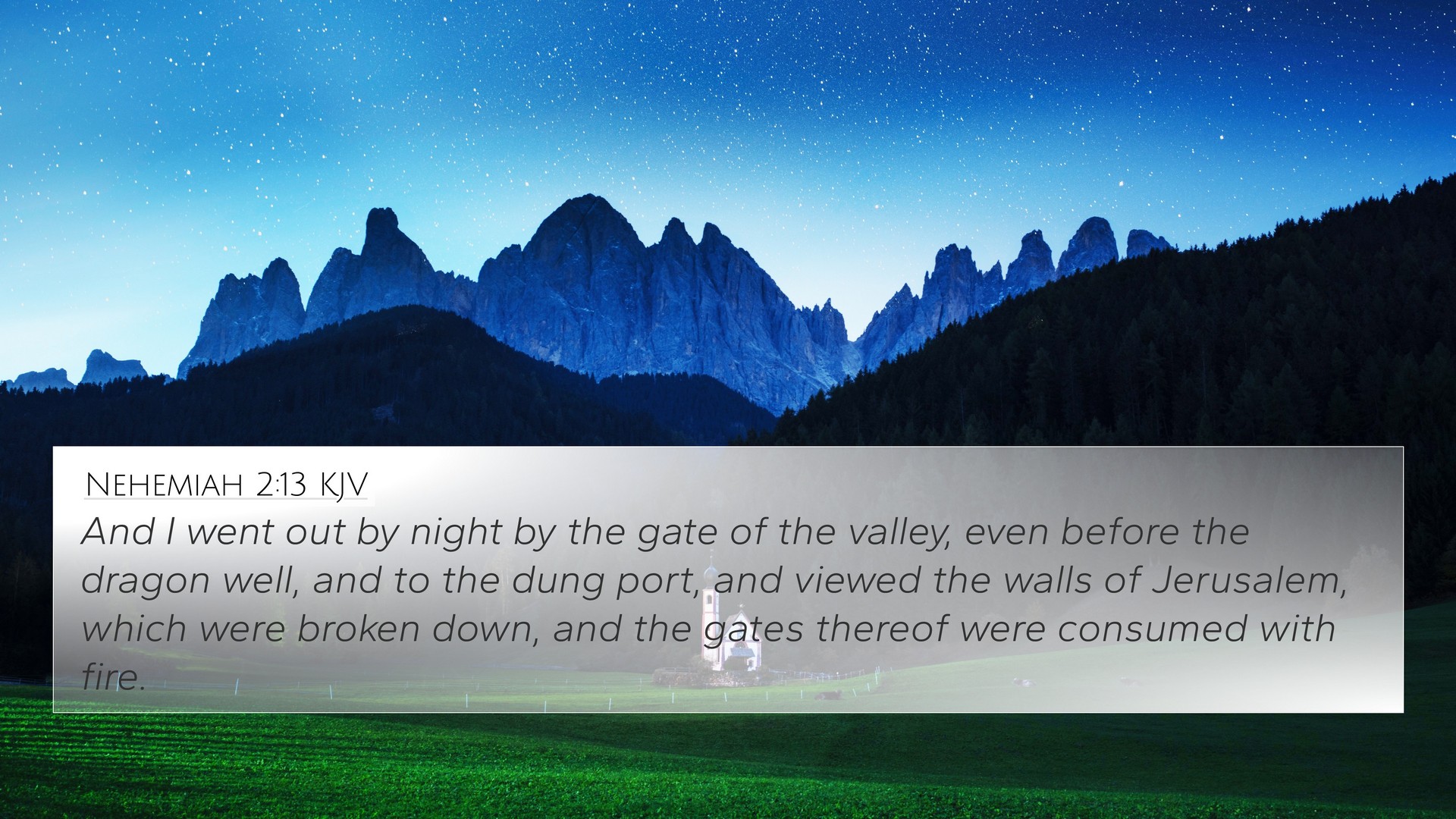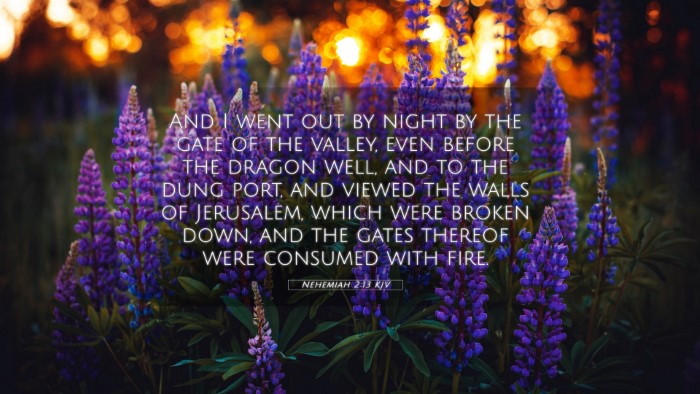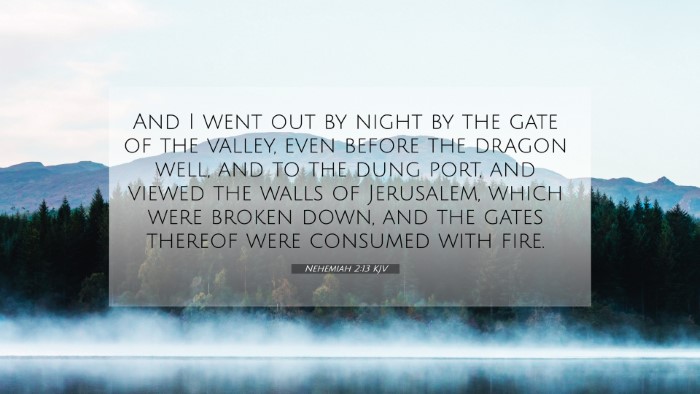Old Testament
Genesis Exodus Leviticus Numbers Deuteronomy Joshua Judges Ruth 1 Samuel 2 Samuel 1 Kings 2 Kings 1 Chronicles 2 Chronicles Ezra Nehemiah Esther Job Psalms Proverbs Ecclesiastes Song of Solomon Isaiah Jeremiah Lamentations Ezekiel Daniel Hosea Joel Amos Obadiah Jonah Micah Nahum Habakkuk Zephaniah Haggai Zechariah MalachiNehemiah 2:13 Similar Verses
Nehemiah 2:13 Cross References
And I went out by night by the gate of the valley, even before the dragon well, and to the dung port, and viewed the walls of Jerusalem, which were broken down, and the gates thereof were consumed with fire.
Uncover the Rich Themes and Topics of This Bible Verse
Listed below are the Bible themes associated with Nehemiah 2:13. We invite you to explore each theme to gain deeper insights into the Scriptures.
Nehemiah 2:13 Cross Reference Verses
This section features a detailed cross-reference designed to enrich your understanding of the Scriptures. Below, you will find carefully selected verses that echo the themes and teachings related to Nehemiah 2:13 KJV. Click on any image to explore detailed analyses of related Bible verses and uncover deeper theological insights.
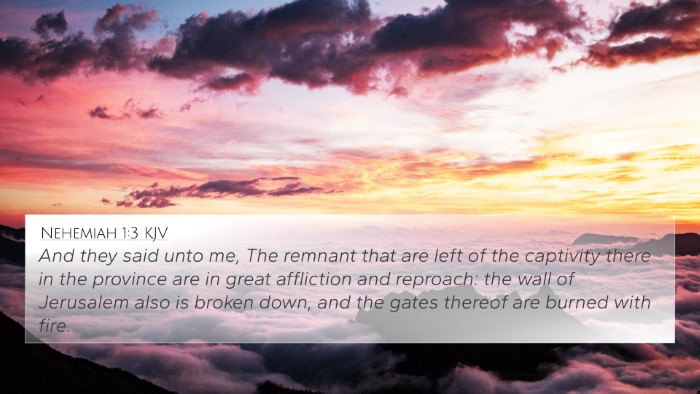
Nehemiah 1:3 (KJV) »
And they said unto me, The remnant that are left of the captivity there in the province are in great affliction and reproach: the wall of Jerusalem also is broken down, and the gates thereof are burned with fire.
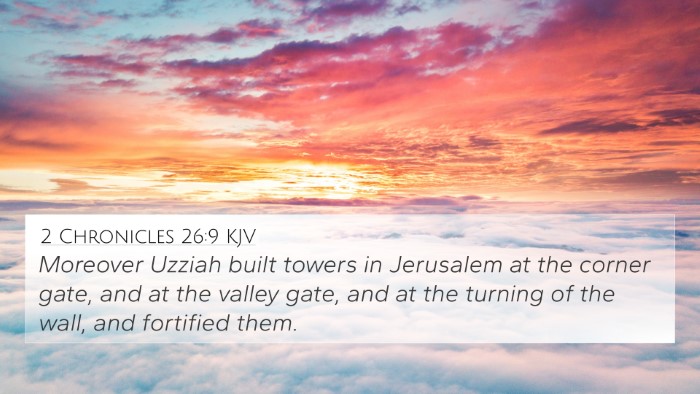
2 Chronicles 26:9 (KJV) »
Moreover Uzziah built towers in Jerusalem at the corner gate, and at the valley gate, and at the turning of the wall, and fortified them.
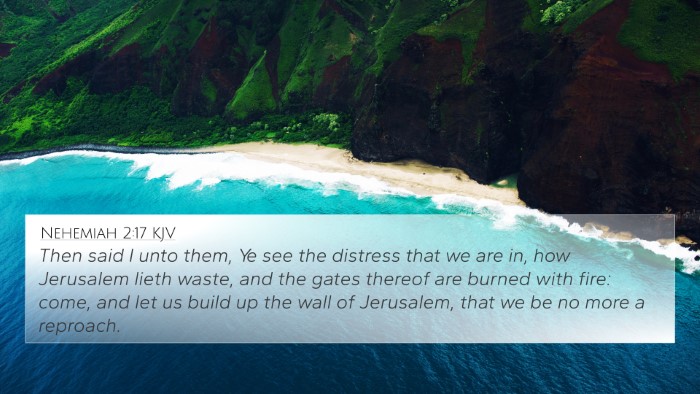
Nehemiah 2:17 (KJV) »
Then said I unto them, Ye see the distress that we are in, how Jerusalem lieth waste, and the gates thereof are burned with fire: come, and let us build up the wall of Jerusalem, that we be no more a reproach.
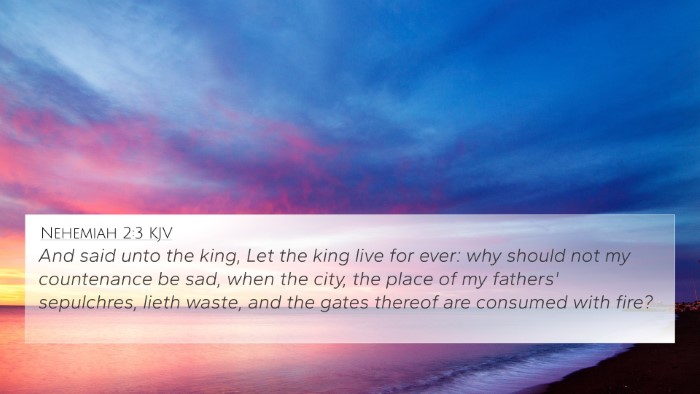
Nehemiah 2:3 (KJV) »
And said unto the king, Let the king live for ever: why should not my countenance be sad, when the city, the place of my fathers' sepulchres, lieth waste, and the gates thereof are consumed with fire?

Nehemiah 3:13 (KJV) »
The valley gate repaired Hanun, and the inhabitants of Zanoah; they built it, and set up the doors thereof, the locks thereof, and the bars thereof, and a thousand cubits on the wall unto the dung gate.
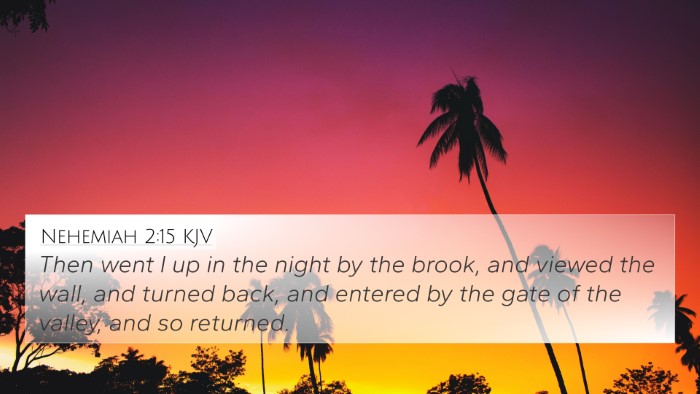
Nehemiah 2:15 (KJV) »
Then went I up in the night by the brook, and viewed the wall, and turned back, and entered by the gate of the valley, and so returned.
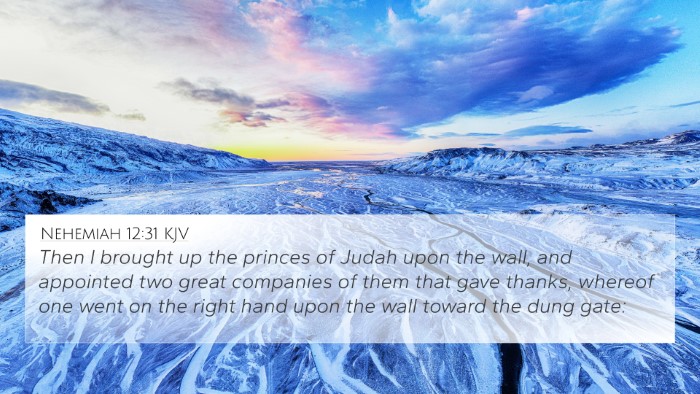
Nehemiah 12:31 (KJV) »
Then I brought up the princes of Judah upon the wall, and appointed two great companies of them that gave thanks, whereof one went on the right hand upon the wall toward the dung gate:
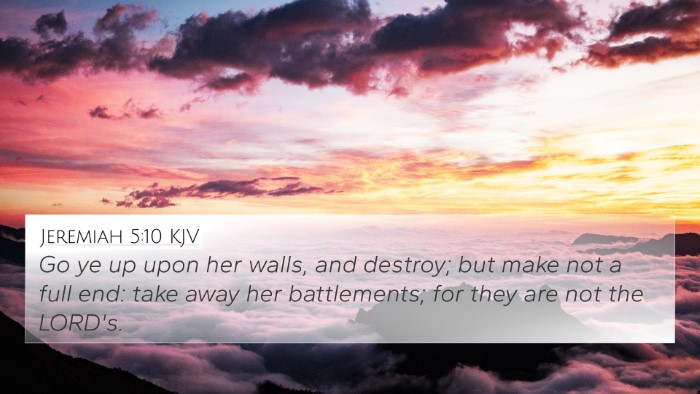
Jeremiah 5:10 (KJV) »
Go ye up upon her walls, and destroy; but make not a full end: take away her battlements; for they are not the LORD's.
Nehemiah 2:13 Verse Analysis and Similar Verses
Understanding Nehemiah 2:13
Nehemiah 2:13 states:
"And I went out by night through the valley gate unto the dragon well, and to the dung port, and viewed the walls of Jerusalem, which were broken down, and the gates thereof were consumed with fire."
Contextual Overview
In this verse, Nehemiah undertakes a covert expedition at night to assess the ruins of Jerusalem's walls and gates. This journey is part of his broader mission to restore Jerusalem after the Babylonian exile.
Commentary Insights
This verse draws various interpretations and insights from noted public domain commentators:
-
Matthew Henry:
Henry emphasizes Nehemiah's carefulness and determination. By choosing to inspect the walls by night, he displayed prudence, understanding that his mission required a thorough assessment without drawing undue attention. This action also reflects his leadership qualities, as he prioritized the needs of the people and the city.
-
Albert Barnes:
Barnes highlights the significance of Nehemiah’s survey of the gates and walls. The "dragon well" and "dung port" suggest locations that illustrate the neglect and desolation faced by Jerusalem. His inspection sets the stage for the forthcoming action to rebuild, marking the importance of knowing the extent of the damage.
-
Adam Clarke:
Clarke offers insight into the symbolic nature of the locations Nehemiah visited. The 'valley gate' represents vulnerability, while the ‘dung port’ signifies the detritus of urban life. This duality shows that Nehemiah confronted both the physical and spiritual decay of Jerusalem.
Key Themes
Nehemiah 2:13 offers several thematic connections that resonate throughout the Scriptures:
- Leadership and Responsibility: Nehemiah embodies true leadership by assessing the situation before taking action.
- Restoration: The rebuilding of the walls symbolizes a larger theme of restoration found throughout the Bible, notably in texts such as Ezekiel 36:33-36 and Isaiah 61:4.
- Vulnerability: The inspection of broken walls correlates with various verses about spiritual and physical vulnerability (e.g., Proverbs 25:28).
- Faith and Action: Nehemiah's actions reflect a blend of faith and pragmatic decision-making, as seen in James 2:17.
Cross-References
This verse relates to several other scripture passages, highlighting inter-biblical dialogue and thematic connections:
- Jeremiah 29:10-11: Reflects hope for restoration after exile.
- Ezekiel 36:10: God's promise to restore desolate cities.
- Psalm 51:18: A plea for restoration of Zion.
- Zechariah 1:16: Assurance of God's return to Jerusalem.
- Matthew 5:14: The city on a hill, symbolizing the need for witness and restoration.
- Hebrews 11:10: Looking forward to the city with foundations.
- 2 Corinthians 5:17: The new creation as a symbol of life and renewal.
Practical Applications
Understanding Nehemiah 2:13 encourages us to:
- Examine the status of our spiritual lives.
- Approach leadership roles with serious commitment and understanding of the issue at hand.
- Recognize the importance of restoration—not just physically but spiritually and relationally as well.
Conclusion
Nehemiah 2:13 is a pivotal verse that not only narrates an historical event but also invites believers to consider themes of leadership, restoration, and faith in action. By making use of cross-referencing and drawing connections across scripture, we can gain a deeper understanding of God's overarching plan for His people.
Keywords for Further Study
For those seeking to delve more into the interconnections within the Bible, here are some reflective keywords to consider:
- How to find cross-references in the Bible
- Identifying connections between Old and New Testament
- Bible verse parallels
- Cross-referencing Biblical texts
